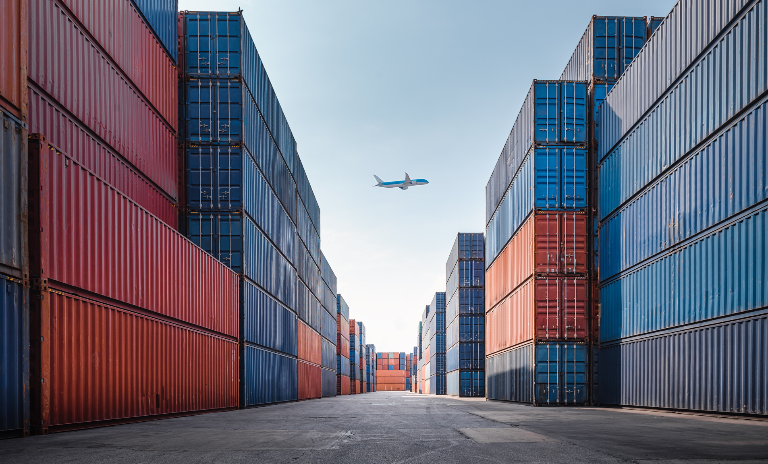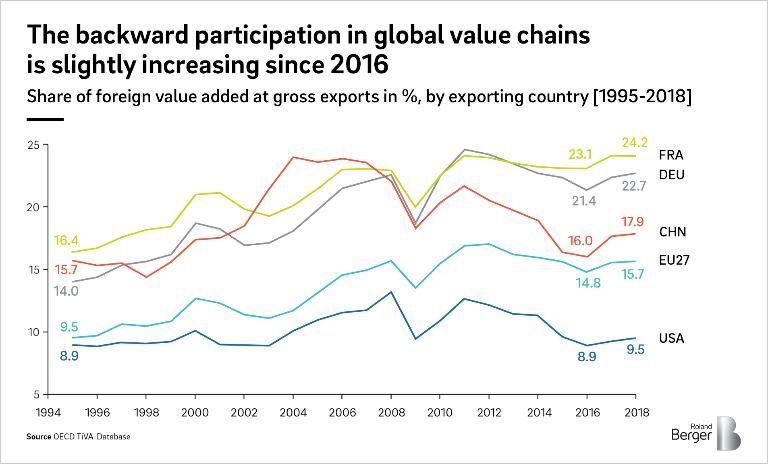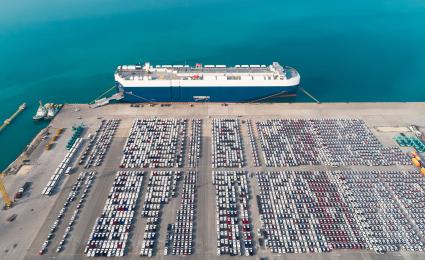Global automotive production networks need to be reshaped towards supply chains that are more sustainable and regional.


Globalization is changing
By David Born and Christian Krys
… but we are certainly not seeing the end of globalization
Has Covid-19 sounded the death knell for globalization? Given the supply crunch we are seeing in sectors from automotive to semiconductors, the impression among the general public is that globalization – in the sense of production operations around the world being interlinked through global value chains – has reached the end of the road.

"Globalization and the associated search for optimal production conditions will have to go hand in hand with considerations of supply chain resilience in the future. This will lead not to the end of globalization but to a more sustainable form of globalization."
Of course, the coronavirus pandemic has had a negative impact on global value chains, throwing into painful relief the vulnerability and weaknesses of close-knit international supply chains and the economies based upon them. However, this does not mean it's the end of globalization. The latest figures from the OECD's TiVA database make that very clear.
Backward participation as an indicator of integration in global value chains
The OECD's TiVA database is the most reliable source of substantiated statements on changes in global value chains. Among other things, it permits the level of so-called backward participation on the part of individual countries and regions to be analyzed and thus enables us to know the share of foreign value added in the exports of a given country or region.
A look at the TiVA database figures published on November 17, 2021 shows that global value chains have been constantly going through ups and downs for decades – and this has nothing to do with Covid-19. Globalization is not a one-way street heading in one direction only, nor is it a natural phenomenon that happens according to some physical law. Globalization was always, is still, and will forever be dependent on a wide variety of economic, social and (geo)political conditions.
The figure below illustrates the trend in backward participation for Germany, France, the EU27, China and the USA in the period 1995-2018. A number of phenomena and trends can be seen here that give the lie to both rumors of the end of globalization and the assumption that globalization is something that is irreversibly and continuously increasing.

"Of course, the coronavirus pandemic has had a negative impact on global value chains. However, this does not mean it's the end of globalization."
Four phenomena of note
First, there is a striking variation in the degree to which the different economic zones are integrated in global value chains. This indicates that global value chains are not something that characterizes and affects all developed economies in exactly the same way in the era of globalization. The German and French economies, for example, are very strongly integrated in global value chains. If we take into account not only the intensive backward participation but also the high export ratio (ratio of exports to GDP) of the German economy, it is clear that the vulnerability and resilience of supply chains are particularly pressing issues for the German economy.
The USA, on the other hand, which has a much lower export ratio than Germany or France and whose imports go largely into domestic consumption, exhibits a much lower level of integration in global value chains than Germany or France.
Second, if we look at China, the USA and Germany alone, we can see that the respective highs and lows of their integration in global economic chains in the period 1995 to 2018 fall at different points in time. The highest level of backward participation was reached in China in 2004, in the USA in 2008 and in Germany in 2011 – confirming that globalization is a diverse and changeable phenomenon that does not automatically follow the same pattern for all economic zones.
The fact that integration in global value chains has tracked differently in the three economic zones over the last three decades is due to the respective states of these economies at the start of the period. The figures for China, for example, reflect the structural change the Chinese economy has gone through since the 1990s: China's economic boom began with the Chinese economy specializing in assembling imported intermediates into final products and exporting these out into the world market. Over the years, however, the intermediate inputs that China used to import were increasingly replaced by in-country production and thus the share of foreign value added in the country's exports fell.
A third point worth noting is that the backward participation of the Chinese economy in 2016 was only slightly higher than it was in 1995 (16.0% vs. 15.7%). For the USA, backward participation actually remained constant over the same period (8.9%). A different trend can be seen in Germany, where the figure for 2018 is now much higher as it was in 1995 (22.7% vs. 14%). The German economy, with its strong export orientation in sectors such as automotive and engineering, has become increasingly integrated into global value chains over the past three decades. This naturally opens up many opportunities to German companies, but it also makes them extremely vulnerable to a supply crunch in the event of a crisis.
A fourth observation is that since 2016, integration in global value chains has been increasing only slightly but is on a definite upward trend in all of the economic zones in the chart. What this makes clear is that all this talk of the end of globalization does not correspond to the economic facts. Indeed, to summarize all four observations, it is evident that globalization is constantly changing and that the globalization trend varies between economic zones.
Preserving the benefits of the international division of labor: making global supply chains more sustainable
The advantages of having a global division of labor are still very clear, both in industrialized countries and in many emerging economies. Being integrated in global value chains ensures a high level of efficiency, secures prosperity and creates development prospects for emerging and developing economies. Being a strong exporter, Germany would certainly have a lot to lose from any decline in globalization or even an intensification of trade conflicts or increase in protectionist tendencies. Every political effort should therefore be made in Germany to try to keep markets open and the German economy's trade openness high.
Conclusion: Even in post-Covid times, globalization is not going to be undone. But it will continue to evolve, just as it did before Covid. The huge increase in international trade in services alone will ensure that this is so. Globalization and the associated search for optimal production conditions will have to go hand in hand with considerations of supply chain resilience in the future. This will lead not to the end of globalization but to a more sustainable form of globalization.





